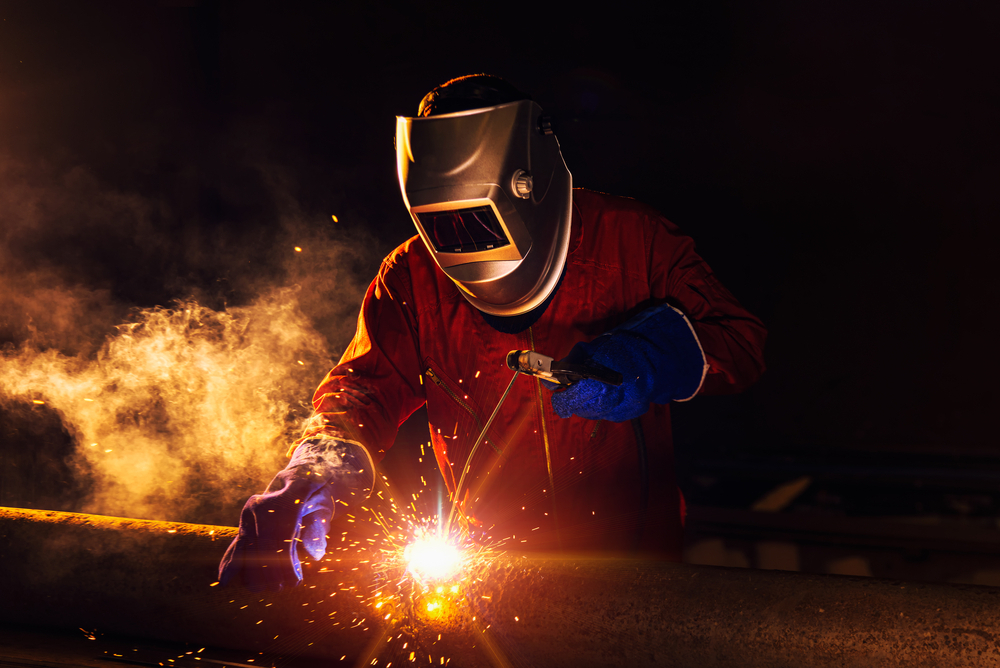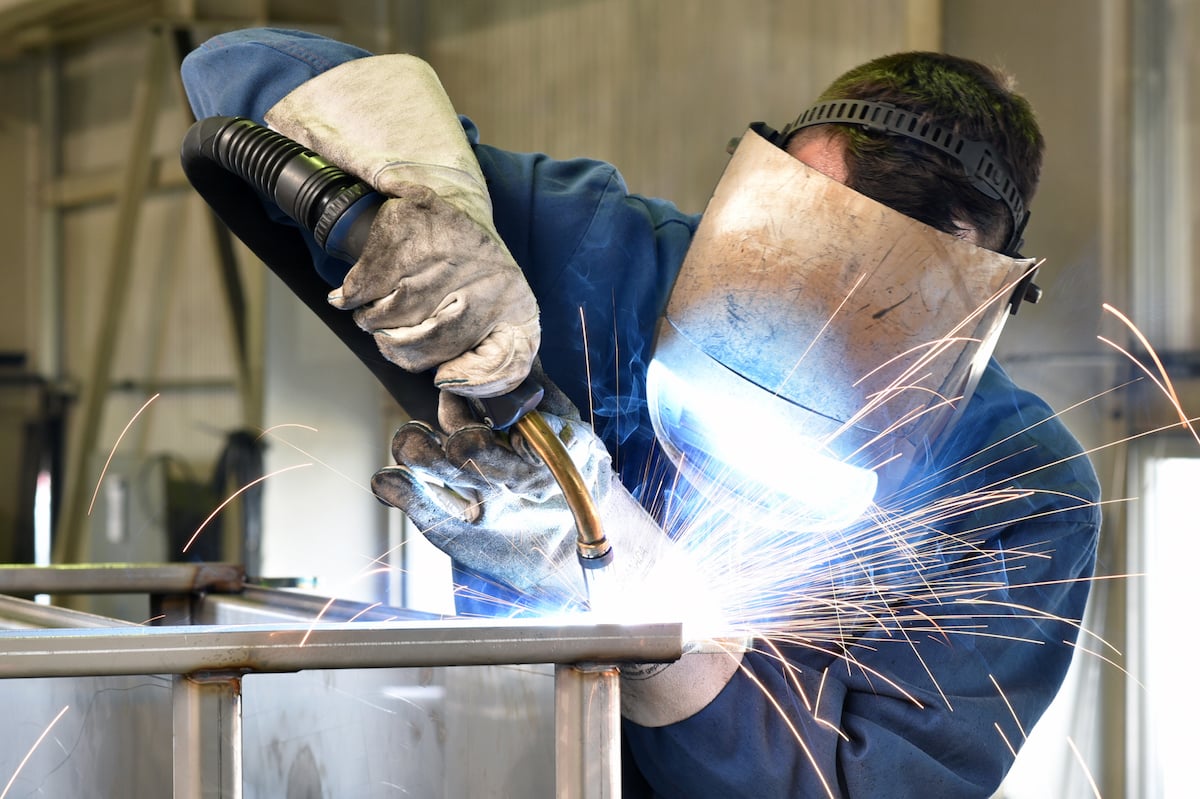Everything about Welding: Key Insights Into Techniques and Best Practices for Success
Welding encompasses a variety of strategies, each fit for certain materials and applications. Recognizing these techniques, such as GMAW, SMAW, and TIG, is necessary for achieving excellent outcomes. The best tools and safety and security practices can not be overlooked. As prep work and troubleshooting play critical roles in the welding procedure, mastering these elements can considerably improve the top quality of the final product. What are the key factors that ensure a successful weld?
Understanding Various Welding Strategies
Welding methods encompass a range of methods, each fit to particular applications and materials. Amongst one of the most typical techniques are Gas Metal Arc Welding (GMAW), Shielded Metal Arc Welding (SMAW), and Tungsten Inert Gas Welding (TIG) GMAW, additionally called MIG welding, is popular for its rate and flexibility, making it excellent for thin materials. SMAW, or stick welding, is preferred for its simplicity and effectiveness in outdoor settings, specifically with thicker metals. TIG welding offers accuracy and control, making it ideal for elaborate job and non-ferrous metals (Montana Mobile Welding and Repair). Each strategy has its special advantages and considerations, enabling welders to pick the very best method based upon the job's demands, product kind, and wanted results. Understanding these strategies is crucial for successful welding
Necessary Welding Devices and Tools
While different welding strategies require specific skills, the best equipment and tools are similarly vital for attaining high quality outcomes. Vital welding equipment includes welding makers, which differ relying on the method-- such as MIG, TIG, or stick welding. Safety gear, including gloves, safety helmets, and aprons, warranties safety and comfort throughout the process. On top of that, components and clamps aid secure products in position, making sure precision in welds. Consumables like welding poles, wire, and securing gas are likewise crucial parts that influence the high quality of the weld. Furthermore, devices such as grinders and cutters facilitate surface prep work and post-weld completing, contributing to an expert result. Buying high-quality equipment ultimately improves the effectiveness and effectiveness of welding projects.
Safety Practices in Welding
Appropriate safety and security methods are crucial in the welding sector to secure employees from possible risks. Welders have to put on appropriate personal protective tools (PPE), including headgears with appropriate shading, gloves, and flame-resistant apparel. Sufficient ventilation is essential to decrease direct exposure to damaging fumes and gases produced during the welding process. Additionally, employees must be learnt the proper handling of welding tools to stop accidents. Fire precaution, such as keeping combustible products away from the welding area and having fire extinguishers conveniently offered, are required. Regular examinations of equipment and work areas can assist recognize prospective threats prior to they bring about mishaps. By adhering to these safety and security techniques, welders can produce a more secure working atmosphere and minimize dangers related to their profession.
Readying Products for Welding
Preparing products for welding is an important action that considerably affects the top quality and stability of the last product (Montana Mobile Welding and Repair Belgrade Welding). Proper prep work involves cleaning up the surfaces to remove pollutants such as oil, dust, and corrosion, which can jeopardize the weld. Methods such as grinding, fining sand, or making use of solvents are generally utilized to attain a tidy surface area. Furthermore, guaranteeing that the materials fit together snugly is necessary; spaces can result in weak welds. It's additionally crucial to think about the placement and positioning of the parts, as this will certainly impact the convenience of welding and the last result. Choosing the ideal filler material and making sure compatibility with the base metals is necessary for achieving strong, sturdy welds.
Tips for Achieving High-Quality Welds
Achieving top notch welds requires attention to information and adherence to ideal methods throughout the welding procedure. Proper joint prep work is necessary, guaranteeing surfaces are tidy and totally free from impurities. Selecting the suitable filler product and welding strategy based on the base steels is essential for perfect bonding. Keeping regular travel rate and angle while welding can advertise and stop defects harmony. Additionally, managing warmth input is important; extreme warmth can lead to warping and deteriorated joints. If required, consistently evaluating the welds during the process enables for instant modifications. Lastly, employing proper post-weld therapies, such as cleansing and tension relief, can improve the longevity and honesty of the weld, eventually making sure an effective end result.
Repairing Usual Welding Issues
Welding frequently presents obstacles that can influence the quality and stability of the end product. Typical issues such as porosity, inconsistent weld grains, and overheating can arise, each requiring particular troubleshooting strategies. Understanding these problems is necessary for welders to enhance their abilities and attain perfect results.
Porosity Problems Described
Porosity can frequently be overlooked, it continues to be a vital concern in welding that can endanger the stability of a finished item. Porosity describes the visibility of small gas pockets within the weld bead, which can damage the joint and lead to early failing. This problem generally emerges from contaminants, dampness, or improper securing gas coverage during the welding procedure. To alleviate porosity, welders should confirm that the base products are completely dry and clean, use appropriate protecting gases, and maintain regular welding specifications. On a regular basis examining the devices and environment can also help recognize possible problems prior to they show up in the weld. Addressing porosity successfully is essential for achieving strong, long lasting welds that fulfill quality requirements.

Irregular Weld Beads
Irregular weld grains can substantially impact the quality and toughness of an ended up item. Numerous elements add to this concern, consisting of inappropriate travel speed, wrong amperage settings, and inconsistent electrode angles. When the welder moves also swiftly, a bead might appear slim and lack penetration, while moving too gradually can create too much accumulation. Furthermore, using the wrong amperage can cause either undercutting or excessive spatter, both of which compromise weld honesty. The welder's technique, such as irregular lantern activity, can also result in unequal grain look. To reduce these troubles, welders must concentrate on keeping steady, regulated activities and making sure correct tools settings to achieve harmony in their description welds. Uniformity is vital to achieving solid and trusted welds.
Getting Too Hot and Warping Issues
Excessive warmth throughout the welding procedure can cause substantial overheating and contorting concerns, impacting the structural stability of the work surface. These problems typically materialize as distortion, which can endanger placement and fit-up, making further setting up challenging. Elements contributing to overheating consist of the option of welding specifications, such as voltage and travel speed, as well as the type of material being bonded. To minimize these concerns, welders should preserve regular travel rate and ideal warmth input while checking the workpiece temperature level. Furthermore, preheating or post-weld warmth treatment can help alleviate stresses triggered by rapid air conditioning - Belgrade Fabrication. Regular inspection and adherence to finest practices are necessary in avoiding getting too hot and guaranteeing the longevity and integrity of welded structures
Frequently Asked Concerns
What Are the Career Opportunities in the Welding Sector?
The welding sector uses diverse occupation opportunities, including placements as welders, designers, instructors, and inspectors. Specialists can operate in production, construction, aerospace, and automotive markets, gaining from strong demand and affordable wages in various roles.
Exactly How Can I Enhance My Welding Rate Without Giving Up Top Quality?
To improve welding rate without giving up top quality, one should practice effective methods, preserve devices, enhance setups, and improve hand-eye control. Normal training and looking for feedback can also significantly add to attaining much faster, premium welds.
What Accreditations Are Readily Available for Welders?
Many certifications exist for welders, including those from the American Welding Society (AWS), the National Center for Construction Education And Learning and Research Study (NCCER), and numerous industry-specific organizations. These credentials boost employability and show ability effectiveness.
Just How Does Welding Influence the Features of Metals?
Welding affects the buildings of metals by altering their microstructure, which can lead to changes in ductility, firmness, and strength. Heat input and air conditioning prices during the procedure greatly affect these product qualities.
Can I Weld Dissimilar Metals Together?

Comments on “Have you seen signs of incomplete fusion? Montana Mobile Welding and Repair explains how to detect them”